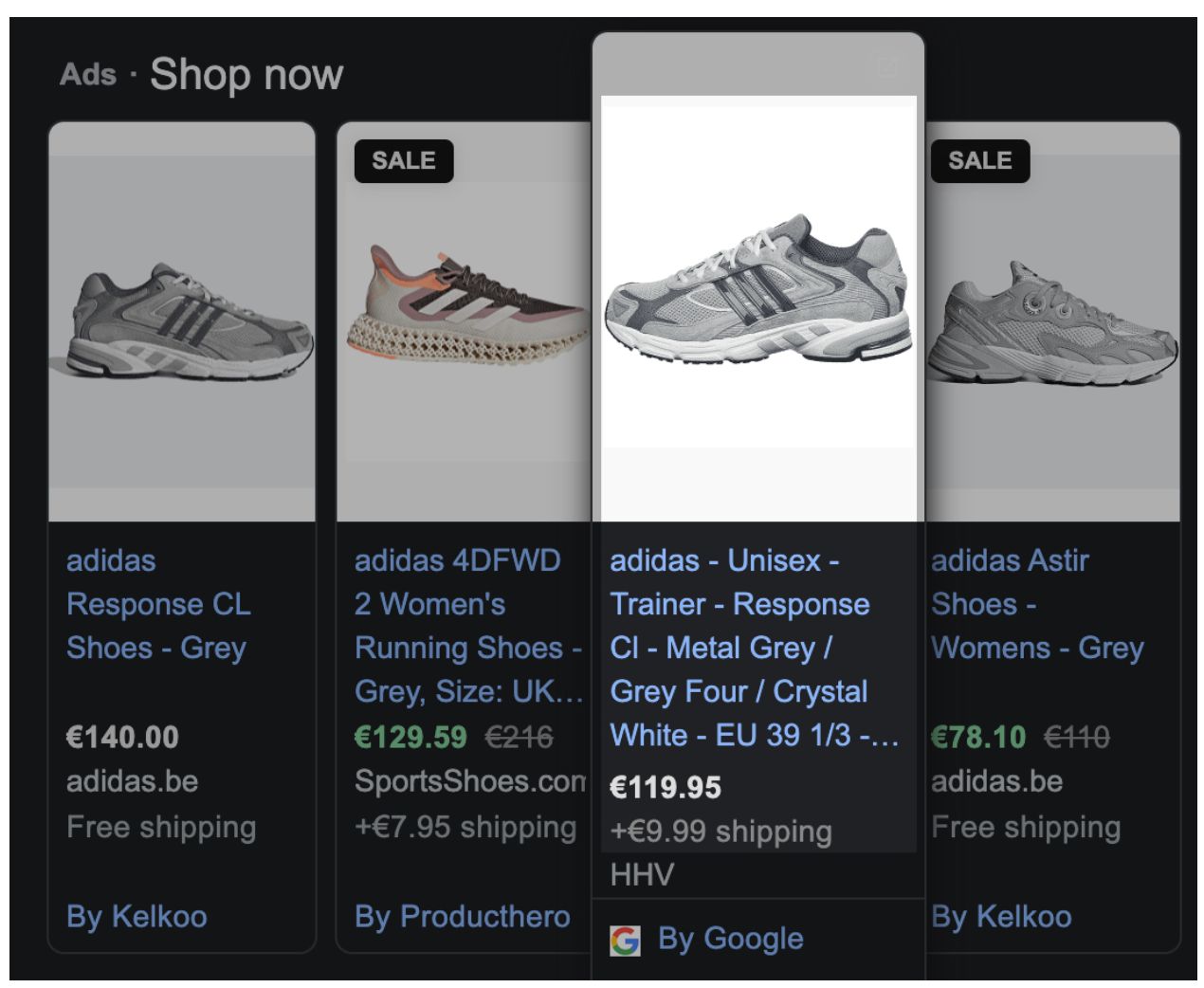Product data feeds are a crucial part of product discovery. 36% of online shoppers search for products using regional marketplaces, and 30% of them use search engines. How do they find you? Through your product data feed.
Product catalogs are crucial for your eCommerce store. Product listing plays a very important role in how well you do business on the web. It’s the first thing your customers will look at when browsing your products. Although your product page can be stunning, it will not matter if it doesn’t have the right information. Your potential customers need to know what they’re buying, and a product data feed will help you achieve this goal.
As an eCommerce store owner, it is your responsibility to make your products visible to search engines and provide them with enough product information for the search engines to rank your website in their results. In today’s article, we are going to look at what a product data feed is and why it is so important for successful online sales.
Key takeaways:
- A product feed, commonly referred to as a shopping feed, contains both a list of the actual products and their specifications. (XML, CSV, or TXT)
- For an optimized feed, highlight important product details like gender, size type, and age range.
- Choosing the right sales channels and appropriate categories for your online business is a crucial step in the feed setup process because not all products will sell successfully on every channel.
What Is Product Data Feed?
A product data feed is a file that contains attributes and information about a company’s products or services. It is also called product feed or data feed, and it can be in a variety of formats, such as JSON and CSV. All the information you have about the products you sell is referred to as a product data feed.
Besides paid advertising, sellers can use product data feeds to transfer product information to various marketplaces and make their sites easier to maintain.
Product data feeds are often used by online marketplaces, shopping channels, search engines, and more that allow consumers to search for products from multiple retailers.
By providing a product data feed to these platforms or your own website, you can organize and advertise each product without doing anything manually. It is crucial, especially when you have a huge number of products and different variants.
As an online shop owner using an eCommerce platform like Shopify, you can easily export your data as an XML, CSV, or text file.
How To Create A Product Data Feed?
To make your own product data feed, there are three basic ways:
-
- Build a manual product data feed using a spreadsheet - if your product list isn’t very big
- Use a content API that pulls data from your online store and automatically update in marketplaces
- Create your product feed with a data feed management app
If you want to learn how to create a top-performing Google Shopping feed, be sure to check out our article on product data feed on Shopify.
7 Key Product Feed Attributes For eCommerce Stores
Here are the most important parts of any digital ad that are typically included in a product feed:
- Product title: A brief description of the product that includes its name and main features.
- Product description: A more detailed explanation of the product that includes information about its features, specifications, and any other relevant details.
- Product image: A high-quality image of the product, typically in square size and JPEG or PNG format. It is used on the product page.
- Product price: How much is the selling price of a product?
- Product availability: Information about whether the product is in stock and ready to ship.
- Product category: A classification of the product based on its type or use, such as “women’s clothing” or “home appliances.”
- Quantity: How many items are included in each order?
- Other attributes: Brand name, size, color, age, material, shipping label, etc.
You’ve already put in a lot of effort in crafting your product descriptions and store listings, so the next step is to optimize this information to ensure it meets the specific requirements of each channel (Facebook, TikTok, Google Shopping, etc).
Why Should You Use Product Feeds?
As you know, data on your online store is not static - items are sold out, prices change, new products are added etc. If you are selling products on additional sales channels aside from your website, these changes can cause some problems. As an online retailer or business owner, you must use product feeds to prevent issues and the following reasons:
- Product feed ensures that your latest stock status, pricing, and product data are always up-to-date on all the sales channels. This happens automatically and saves your time and effort.
- Creating a product feed is a great way to maximize your reach and make sure your customers always have access to the current information about your products. This can help to reduce confusion for shoppers and also prevent losing customers due to incorrect pricing or availability.
- Product data feeds make your products more visible on the web, as your products can be easily indexed by search engines. You can make it SEO-friendly by including relevant keywords. Then potential customers easily find your products when searching online.
By investing in your product feed, you can always be one step ahead of your competition.
Do You Need Data Feed For One Product?
Let’s say you only sell ONE product on your website. Do you need a product data feed for shopping channels? Probably not.
However, you should know that the situation changes when you include different variants of your product. For example, you will add different sizes and different color options for your product. It would be frustrating to import all the data.
Even if you don’t plan to run shopping ads right away, having a product data feed provides many conveniences. Instead of manually adding product attributes to create new category pages, you are able to use a filter in your product data feed and populate it automatically.
That’s why a product data feed is essential for eCommerce stores, especially with a wide variety of products.
Why Are Product Feeds Important In eCommerce?
eCommerce product data feeds are more than just getting data from one place to another. They play a vital role in positioning on global marketplaces.
Each shopping channel has its own rules and requirements for how your product feed should look and how it should be structured. Based on your feed content and keyword relevancy, the quality of your campaigns is affected. Afterward, these channels decide whether your products will be displayed on sales platforms or not.
Therefore, make sure that your product feed has all accurate product data with relevant keywords. If you don’t want to waste your spending on shopping campaigns, you can succeed with an optimized product feed.
How To Optimize Your Product Feed
A well-optimized product data feed will guarantee more visibility for your products, services, and brand. since Google decides when and where to show your ads. You need to ensure your product data is populated enough.
Once you’ve chosen your product data feed type, you can create your feed according to your needs and purposes. Keep in mind you need to check your data feed every day and manage the process.
Optimizing your product data feed allows customers to find what they are looking for. Just listing your products doesn’t bring potential buyers. With a better product listing that is correctly displayed, you will get more clicks and impressions.
6 Ways You Can Use Product Feed Optimization
There are several options to optimize your product feed, but here are six important strategies:
- Improved product descriptions Make sure your descriptions are relevant to the user and well-written. You can add extra benefits like color. Before a user clicks on your ads, it is possible to inform users of the product with details.
- Product title matching search results The product title is a crucial element to drive more traffic. A meaningful title triggers the buyer. Use exactly the same title on your landing page and product ads. Put important details in your title - don’t forget to highlight your attractive features and special offerings, such as free shipping. Make sure people can see the product type, brand, collection, size, price, color, etc. related to your business.
- Image optimization Once you list your products on shopping channels, it’s time to convince buyers to prefer your brand among others. To catch your user’s attention, images must be clear and make sure they show the right product. For each product variant, have specific and high-quality images. Also, it will be good to put multiple shots of the product image. When optimizing images, avoid using text, promotional words, and price in the image.
- Stock availability Make sure your inventory levels are updated consistently with the latest status of your shop. If Google can’t recognize whether the product is in stock/out of stock/preorder, it will affect the algorithm badly, and your ad performance will decrease.
- Proper categorization It isn’t mandatory to submit a product category, but it’s highly recommended. It is important to help visitors find a certain type of product. So Google can show your shopping ads to the right audience with well-structured product categories.
- Optimize item group ID If you have many variants of products, you can group those items together. When a user searches for a product, different groups will appear, such as material, color, etc. Each variant has an individual ID.
Overall we can say that product title optimization is the most important thing that can give you more traffic in your shopping campaigns. As a good example, take a look at this product title from Adidas; it includes a brand name, gender, category, color, size, price, etc.

How Do You Combine Multiple Product Data Feeds?
Having multiple product data feeds is possible for users. These can refer to separate product groups that target different ads platforms such as Google Shopping, Pinterest, and Facebook.
Most eCommerce platforms are integrated with Google Merchant Center. If you will target Google Shopping, it allows you to connect your product data feeds via content API. Moreover, you can synchronize some settings and feed attributes.
In Google Merchant Center, you are able to create primary and supplemental feeds. These feeds can be linked by using the ID attribute. The type of feed depends on the retailer’s needs.
Primary Feed This is your main feed; you can add or remove your items, set your target countries and languages, and create feed rules for your product data. Merchant Center uses this feed to show your product data.
Note that you should not submit the same products in separate primary feeds. Google suggests uploading all of your products in a single primary feed.
Supplemental Feed Some stores need extra features to properly deal with product changes. The supplemental feed provides additional attributes that may be missed in the primary one.
Once you create your supplemental feed, Merchant Center will generate feed rules to connect two feeds. Then, it will combine multi-source feeds together and give you raw product data. You can also apply rules to product groups.
Conclusion
By now, you should have a better understanding of product data feeds and how to optimize them for successful shopping campaigns. It’s time to put this knowledge into action and start working on your own product feeds.
Keep in mind a well-structured product feed can make all the difference in standing out from the competition and driving sales for your eCommerce business. So don’t wait any longer - get started on optimizing your product feeds today and watch your business thrive!

































